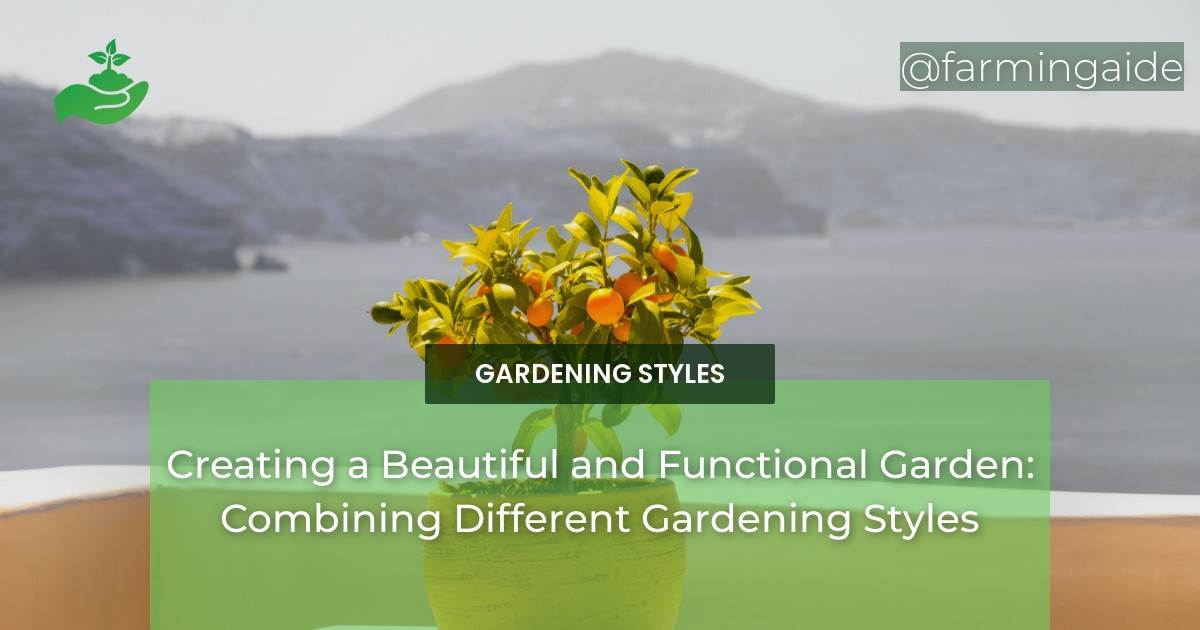Gardening is a beloved pastime for many, offering a sense of peace and connection to nature. However, with so many gardening styles to choose from, it can be overwhelming to decide which one is right for you. From traditional English gardens to modern minimalist designs, each style has its own unique charm and benefits. But why limit yourself to just one style? By combining different gardening styles, you can create a beautiful and functional garden that reflects your personal taste and meets your gardening needs. In this article, we will explore the world of gardening styles and how you can combine them to create a stunning and unique garden. So grab your gardening gloves and let’s get started!
Understanding Gardening Styles
Before we dive into combining gardening styles, it’s important to have a basic understanding of the different styles available. Gardening styles can be broadly categorized into two main types: home gardening and landscaping. Home gardening refers to the cultivation of plants in a small, personal space such as a backyard or balcony. Landscaping, on the other hand, involves designing and creating outdoor spaces on a larger scale, often for commercial or public use.
Within these two main categories, there are various gardening styles that have evolved over time and are influenced by different cultures, traditions, and personal preferences. Some popular gardening styles include English, French, Japanese, Mediterranean, and modern minimalist. Each style has its own unique characteristics and elements that make it stand out.
Combining Different Gardening Styles
Combining different gardening styles allows you to create a garden that is not only visually appealing but also functional and practical. By incorporating elements from different styles, you can create a garden that reflects your personal taste and meets your gardening needs. Here are some tips on how to combine different gardening styles:
- Start with a plan: Before you start combining styles, it’s important to have a clear plan in mind. Consider the size and layout of your garden, the plants you want to grow, and the overall aesthetic you want to achieve.
- Choose a dominant style: To avoid a chaotic and cluttered look, it’s best to choose one style as the dominant one and use elements from other styles as accents. This will help create a cohesive and harmonious look.
- Consider the climate: When combining gardening styles, it’s important to consider the climate of your region. Some styles may not be suitable for certain climates, so it’s best to choose elements that will thrive in your area.
- Use plants to tie different styles together: Plants are a great way to tie different styles together. For example, you can use traditional English garden plants in a modern minimalist design to add a touch of softness and color.
- Incorporate hardscaping elements: Hardscaping elements such as pathways, walls, and water features can also help tie different styles together. For example, a Japanese-inspired garden can be enhanced with a modern water feature.
Creating a Beautiful and Functional Garden
Combining different gardening styles not only allows you to create a visually stunning garden, but it also makes your garden more functional and practical. By incorporating elements from different styles, you can create a garden that meets your specific gardening needs. Here are some ways to make your garden both beautiful and functional:
- Choose plants that serve a purpose: When selecting plants for your garden, consider their purpose. For example, you can choose plants that attract pollinators, repel pests, or provide shade.
- Use vertical space: Vertical gardening is a great way to maximize space and add visual interest to your garden. You can use trellises, arbors, and hanging baskets to grow plants vertically.
- Include seating areas: A garden is not just for plants, it’s also a place for you to relax and enjoy. Incorporate seating areas into your garden design to make it a more inviting and functional space.
- Consider maintenance: When combining different gardening styles, it’s important to consider the maintenance required for each style. Choose elements that are easy to maintain and fit your gardening skills and schedule.
How Can I Combine Different Gardening Styles to Adapt to Every Season?
Combining yearround gardening styles allows for a versatile and vibrant garden throughout the seasons. By integrating elements of cottage, Japanese, and edible gardening, you can create a stunning landscape. Embrace cottage flower borders, Japanese rock gardens, and strategically planted edible perennials to enjoy the beauty and productivity of your garden all year long.
Conclusion
In conclusion, combining different gardening styles allows you to create a unique and functional garden that reflects your personal taste and meets your gardening needs. By understanding the different gardening styles and incorporating elements from each, you can create a beautiful and harmonious garden that will be the envy of your neighborhood. So don’t be afraid to mix and match styles and get creative with your garden design. Happy gardening!
RELATED ARTICLES:


